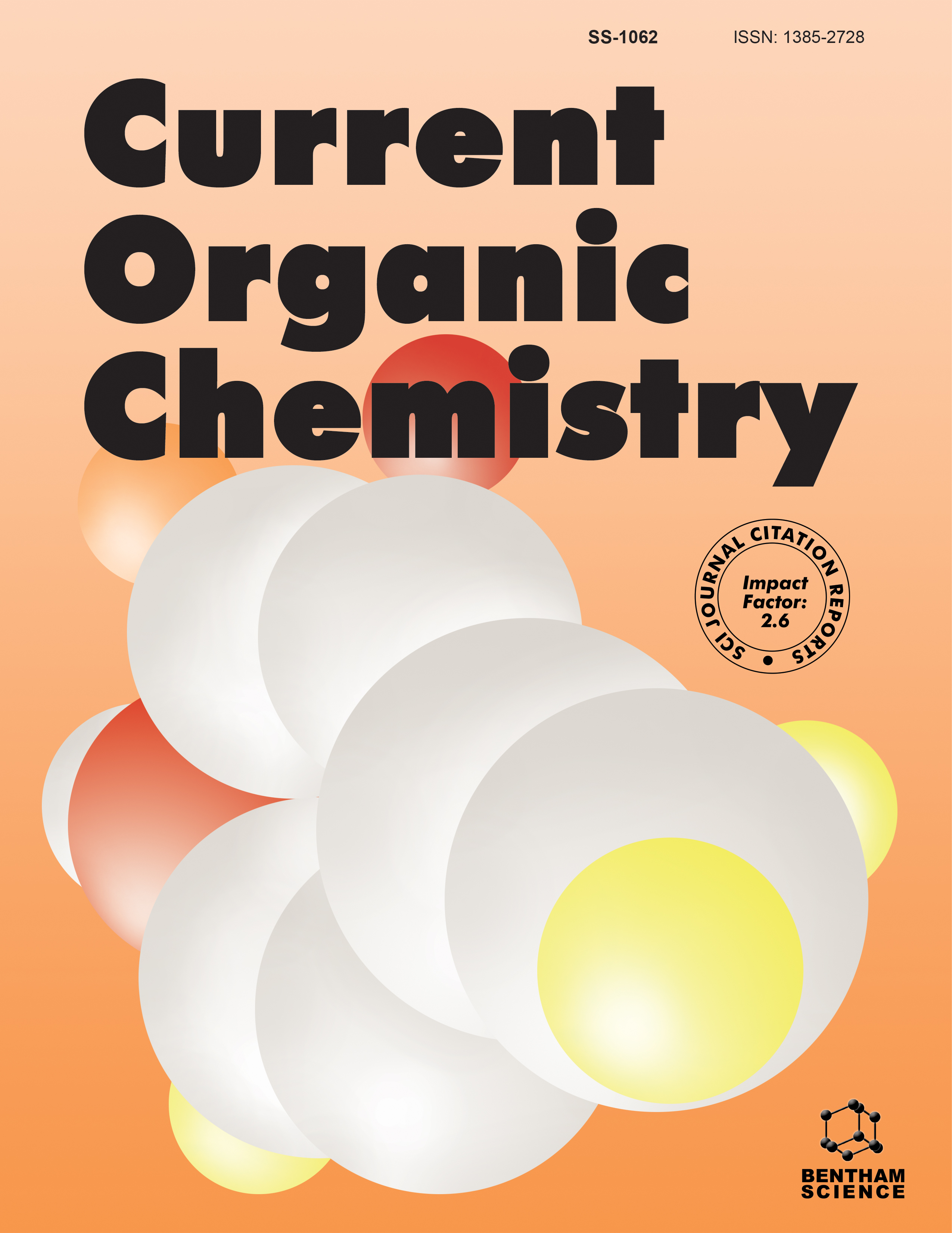- Home
- A-Z Publications
- Current Organic Chemistry
- Previous Issues
- Volume 28, Issue 14, 2024
Current Organic Chemistry - Volume 28, Issue 14, 2024
Volume 28, Issue 14, 2024
-
-
Friedel Crafts Reactions Revisited: Some Applications in Heterogeneous Catalysis#
More LessAuthors: Elizabeth R. Lachter, Rosane A.S. San Gil and Luis G. ValdiviesoImportant organic reactions require the use of catalysts. The Friedel-Crafts reactions were discovered by Charles Friedel and James Mason Crafts in 1887. They are an essential catalytic process since they are widely applied in different areas such as fuels, cleaning, and pharmacological products. The reaction is usually carried out in the presence of Lewis acids or Brønsted acids in a homogeneous medium, with the nucleophilic aro Read More
-
-
-
Green Routes to Dimethyl Carbonate: A Green and Versatile Methylating Reactant
More LessThis mini-review reports the current routes used for the production of dimethyl carbonate (DMC), a green and versatile methylating reactant widely used in organic synthesis. The use of DMC in methylation processes is also discussed. The main routes of DMC production, encompassing the reaction between phosgene and methanol and the oxidative carbonylation of methanol with CO and urea methanolysis, are summarised Read More
-
-
-
Trihaloisocyanuric Acids: Useful Reagents for Halogenation Reactions and Heterocyclic Scaffold Construction
More LessTrihaloisocyanuric acids [1,3,5-trihalo-1,3,5-triazine-2,4,6-(1H,3H,5H)-triones] are commercially available or easily prepared solids. They are highly reactive, stable, easily handled, and have an excellent atom economy, transferring up to three halogen atoms to organic substrates. In these regards, the present review summarizes their synthetic applications as safe and convenient reagents. Therefore, electrophilic halogenat Read More
-
-
-
Carboxylic Acids in the Synthesis of Chemicals for Addressing Flow Assurance Challenges in Offshore Petroleum Production
More LessFlow assurance encompasses the technical challenges of transporting hydrocarbon mixtures from the reservoir to the platform and refineries. Challenges in flow assurance include gas hydrate plugs, deposition of paraffin wax, asphaltenes, naphthenates, scale, and corrosion. Managing these deposits incurs high costs due to production interruptions and remediation operations like pigging, solvent injection, acid dissolutio Read More
-
-
-
Description of Some Methodologies for the Synthesis of 1,4-Naphthoquinone Derivatives and Examples of their Biological Activity: A Review
More LessAn alternative to finding new drugs for the treatment of various diseases is the chemical modification of the structure of compounds of natural origin. Among them, naphthoquinones are very interesting candidates, as they are antibacterial, antifungal, antiparasitic, and anticancer agents. Naphthoquinones are redox compounds that can accept one or two electrons, generating reactive oxygen species in the cell and produc Read More
-
Volumes & issues
-
Volume 29 (2025)
-
Volume 28 (2024)
-
Volume 27 (2023)
-
Volume 26 (2022)
-
Volume 25 (2021)
-
Volume 24 (2020)
-
Volume 23 (2019)
-
Volume 22 (2018)
-
Volume 21 (2017)
-
Volume 20 (2016)
-
Volume 19 (2015)
-
Volume 18 (2014)
-
Volume 17 (2013)
-
Volume 16 (2012)
-
Volume 15 (2011)
-
Volume 14 (2010)
-
Volume 13 (2009)
-
Volume 12 (2008)
-
Volume 11 (2007)
-
Volume 10 (2006)
-
Volume 9 (2005)
-
Volume 8 (2004)
-
Volume 7 (2003)
-
Volume 6 (2002)
-
Volume 5 (2001)
-
Volume 4 (2000)
Most Read This Month
Article
content/journals/coc
Journal
10
5
false
en


